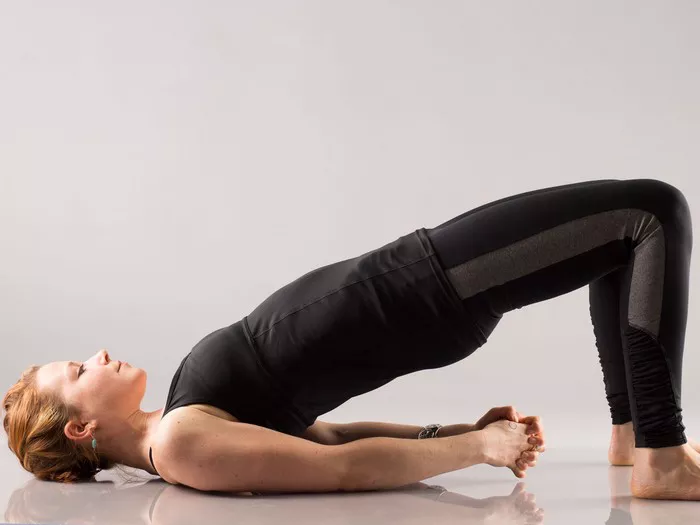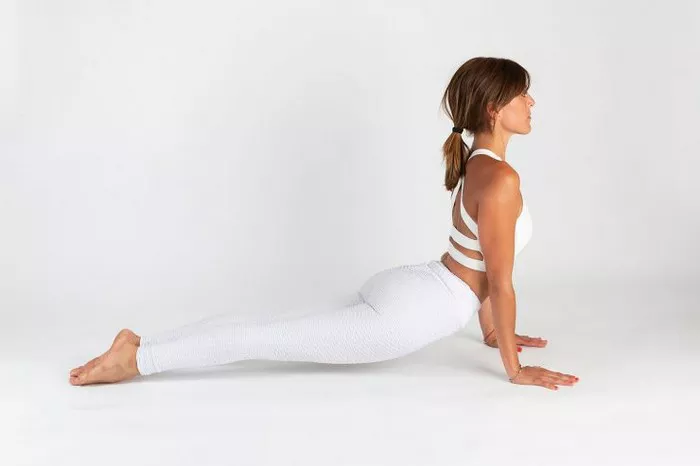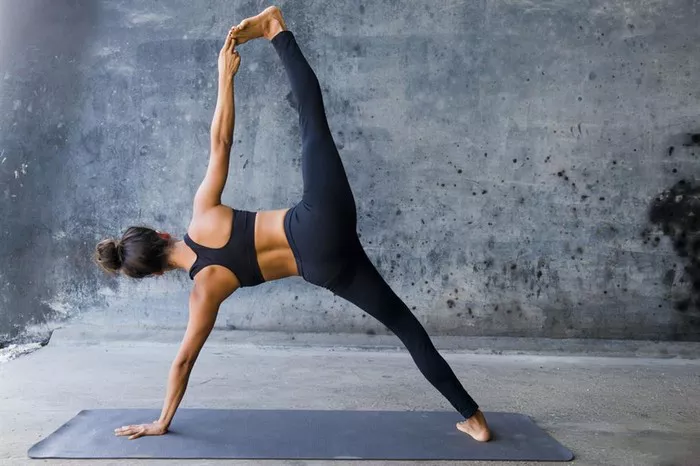Hip arthritis is a common condition that causes pain, stiffness, and reduced mobility in the hip joint. This can significantly impact a person’s quality of life, making it difficult to perform daily activities and engage in physical exercise. One potential approach to managing hip arthritis is through the practice of yoga, a discipline that combines physical postures, breathing exercises, and meditation. But is yoga good for hip arthritis? This article explores the potential benefits, considerations, and guidelines for incorporating yoga into a hip arthritis management plan.
Understanding Hip Arthritis
Hip arthritis primarily manifests in two forms: osteoarthritis (OA) and rheumatoid arthritis (RA).
Osteoarthritis (OA)
Osteoarthritis is a degenerative joint disease characterized by the breakdown of cartilage in the hip joint. This cartilage acts as a cushion, allowing smooth movement of the joint. With OA, the cartilage wears down over time, leading to pain, swelling, and reduced range of motion. Factors contributing to OA include aging, genetics, joint injuries, and obesity.
Rheumatoid Arthritis (RA)
Rheumatoid arthritis is an autoimmune disease where the body’s immune system attacks the synovial membrane that lines the joints, causing inflammation and pain. RA can affect multiple joints throughout the body, including the hips. Unlike OA, RA is not directly related to wear and tear but involves a more complex interplay of immune responses.
Symptoms of Hip Arthritis
Common symptoms of hip arthritis include:
- Pain in the groin, thigh, or buttocks
- Stiffness and limited range of motion
- Swelling and tenderness around the hip joint
- Difficulty walking or performing weight-bearing activities
- A grinding or popping sensation during movement
The Role of Exercise in Hip Arthritis Management
Exercise is a cornerstone of managing hip arthritis. It helps maintain joint function, improve muscle strength, and enhance overall mobility. However, high-impact activities can exacerbate symptoms, making it crucial to choose low-impact, joint-friendly exercises. This is where yoga can play a significant role.
The Potential Benefits of Yoga for Hip Arthritis
Yoga offers a holistic approach to managing hip arthritis, addressing both physical and mental well-being. Here are some key benefits:
1. Improved Flexibility and Range of Motion
Yoga involves a series of stretches and poses that target various muscle groups and joints. Regular practice can enhance flexibility and improve the range of motion in the hips. This increased mobility can help alleviate stiffness and reduce pain associated with hip arthritis.
2. Strengthening of Muscles
Strong muscles support and stabilize the hip joint, reducing the load and stress on the arthritic joint. Yoga poses often require engaging core muscles, glutes, and thigh muscles, which can help build strength and provide better joint support.
3. Pain Relief
Many yoga poses involve gentle stretching and relaxation techniques that can help reduce pain and discomfort. By promoting blood circulation and reducing muscle tension, yoga can alleviate the symptoms of hip arthritis and enhance overall comfort.
4. Stress Reduction
Chronic pain from hip arthritis can lead to stress and anxiety. Yoga incorporates breathing exercises and meditation, which are effective in reducing stress levels. Managing stress is essential for overall health and can indirectly contribute to pain management.
5. Weight Management
Maintaining a healthy weight is crucial for managing hip arthritis, as excess weight puts additional stress on the joints. Yoga, combined with a balanced diet, can help individuals achieve and maintain a healthy weight, thus reducing the burden on the hips.
6. Improved Balance and Stability
Yoga emphasizes balance and coordination, which are vital for preventing falls and injuries, especially in individuals with hip arthritis. Better balance can enhance overall mobility and confidence in performing daily activities.
Types of Yoga Suitable for Hip Arthritis
Not all forms of yoga are suitable for individuals with hip arthritis. It’s important to choose styles that focus on gentle, low-impact movements. Here are some recommended types of yoga:
1. Hatha Yoga
Hatha yoga is a gentle form of yoga that focuses on basic poses and breathing techniques. It is suitable for beginners and individuals with limited mobility. Hatha yoga sessions typically involve slow-paced movements and long holds, making it ideal for those with hip arthritis.
2. Iyengar Yoga
Iyengar yoga emphasizes proper alignment and the use of props such as blocks, straps, and bolsters to support the body in various poses. This form of yoga is beneficial for individuals with hip arthritis as it allows for modifications and adjustments to accommodate joint limitations.
3. Restorative Yoga
Restorative yoga involves passive poses that are held for extended periods with the support of props. This style of yoga is deeply relaxing and can help reduce stress and pain. Restorative yoga is particularly suitable for individuals with severe hip arthritis or those experiencing flare-ups.
4. Chair Yoga
Chair yoga is a modified form of yoga that involves performing poses while seated or using a chair for support. It is an excellent option for individuals with limited mobility or balance issues. Chair yoga can help improve flexibility, strength, and overall well-being without putting excessive strain on the hips.
Specific Yoga Poses for Hip Arthritis
Certain yoga poses are particularly beneficial for individuals with hip arthritis. These poses focus on gently stretching and strengthening the muscles around the hip joint. Here are some recommended poses:
1. Child’s Pose (Balasana)
Child’s Pose is a gentle stretch for the hips, thighs, and lower back. It helps release tension and promotes relaxation.
- Start on your hands and knees.
- Sit back onto your heels, extending your arms forward.
- Rest your forehead on the mat and breathe deeply.
- Hold for 1-3 minutes.
2. Cat-Cow Pose (Marjaryasana-Bitilasana)
Cat-Cow Pose helps improve spinal flexibility and reduces stiffness in the hips and lower back.
- Start on your hands and knees in a tabletop position.
- Inhale, arch your back, and lift your head and tailbone (Cow Pose).
- Exhale, round your spine, and tuck your chin and tailbone (Cat Pose).
- Repeat for 1-2 minutes, moving with your breath.
3. Bridge Pose (Setu Bandhasana)
Bridge Pose strengthens the glutes, hamstrings, and lower back while gently stretching the hip flexors.
- Lie on your back with your knees bent and feet hip-width apart.
- Press your feet into the mat and lift your hips toward the ceiling.
- Hold for 30 seconds to 1 minute, then lower your hips back down.
4. Reclined Bound Angle Pose (Supta Baddha Konasana)
This pose gently stretches the inner thighs and hips, promoting relaxation and flexibility.
- Lie on your back with your knees bent and feet together.
- Let your knees fall open to the sides, bringing the soles of your feet together.
- Place a bolster or pillows under your knees for support.
- Hold for 1-3 minutes.
5. Warrior II (Virabhadrasana II)
Warrior II strengthens the legs and hips while improving balance and stability.
- Stand with your feet wide apart.
- Turn your right foot out and bend your right knee, keeping your left leg straight.
- Extend your arms parallel to the ground and gaze over your right hand.
- Hold for 30 seconds to 1 minute, then switch sides.
6. Pigeon Pose (Eka Pada Rajakapotasana)
Pigeon Pose deeply stretches the hip rotators and hip flexors, providing relief from tightness and pain.
- Start in a tabletop position.
- Bring your right knee forward and place it behind your right wrist.
- Extend your left leg back, keeping your hips square.
- Fold forward and rest on your forearms or forehead.
- Hold for 1-2 minutes, then switch sides.
Precautions and Considerations
While yoga can be beneficial for hip arthritis, it’s important to approach it with caution and mindfulness. Here are some precautions to consider:
1. Consult with a Healthcare Professional
Before starting any new exercise regimen, including yoga, it’s essential to consult with a healthcare professional, such as a physician or physical therapist. They can provide personalized recommendations based on your specific condition and needs.
See Also: What Are the Benefits of Yoga Therapy?
2. Start Slowly and Listen to Your Body
Begin with gentle yoga practices and gradually increase the intensity as your body allows. Pay attention to any pain or discomfort and modify poses as needed. Never force your body into a position that feels uncomfortable or painful.
3. Use Props and Modifications
Take advantage of props such as blocks, straps, and bolsters to support your body in various poses. Modifications can help you achieve the benefits of the pose without straining your joints.
4. Avoid High-Impact or Strenuous Poses
Steer clear of high-impact or strenuous poses that may put excessive strain on your hips. Poses that involve deep hip rotations or extreme stretching should be approached with caution.
5. Focus on Alignment
Proper alignment is crucial in yoga to prevent injury and ensure the effectiveness of each pose. Pay attention to your body’s alignment and make adjustments as needed.
6. Incorporate Rest and Recovery
Balance your yoga practice with adequate rest and recovery. Overexertion can exacerbate arthritis symptoms, so it’s important to listen to your body and give it time to heal.
Integrating Yoga into a Comprehensive Hip Arthritis Management Plan
Yoga can be a valuable component of a comprehensive hip arthritis management plan. However, it should be combined with other strategies for optimal results. Here are some additional approaches to consider:
1. Medication
Depending on the severity of your hip arthritis, your healthcare provider may recommend medications to manage pain and inflammation. Common options include nonsteroidal anti-inflammatory drugs (NSAIDs), analgesics, and corticosteroids.
2. Physical Therapy
Working with a physical therapist can help you develop a personalized exercise plan that includes both yoga and other therapeutic exercises. Physical therapy can improve joint function, strength, and flexibility.
3. Weight Management
Maintaining a healthy weight reduces the strain on your hip joints. A balanced diet and regular exercise, including yoga, can help you achieve and maintain a healthy weight.
4. Assistive Devices
Using assistive devices such as canes, walkers, or shoe inserts can provide additional support and reduce stress on your hips during daily activities.
5. Lifestyle Modifications
Making lifestyle modifications can help manage hip arthritis symptoms. This includes avoiding activities that exacerbate pain, practicing good posture, and using ergonomic furniture.
6. Mind-Body Techniques
Incorporating mind-body techniques such as meditation, mindfulness, and deep breathing exercises can help manage stress and improve overall well-being.
Conclusion
Yoga can be a beneficial and complementary approach to managing hip arthritis. Its emphasis on gentle stretching, strengthening, and relaxation can improve flexibility, reduce pain, and enhance overall quality of life. However, it is important to approach yoga with caution, consult with healthcare professionals, and listen to your body’s needs. By integrating yoga into a comprehensive management plan, individuals with hip arthritis can find relief and maintain an active, fulfilling lifestyle.



















